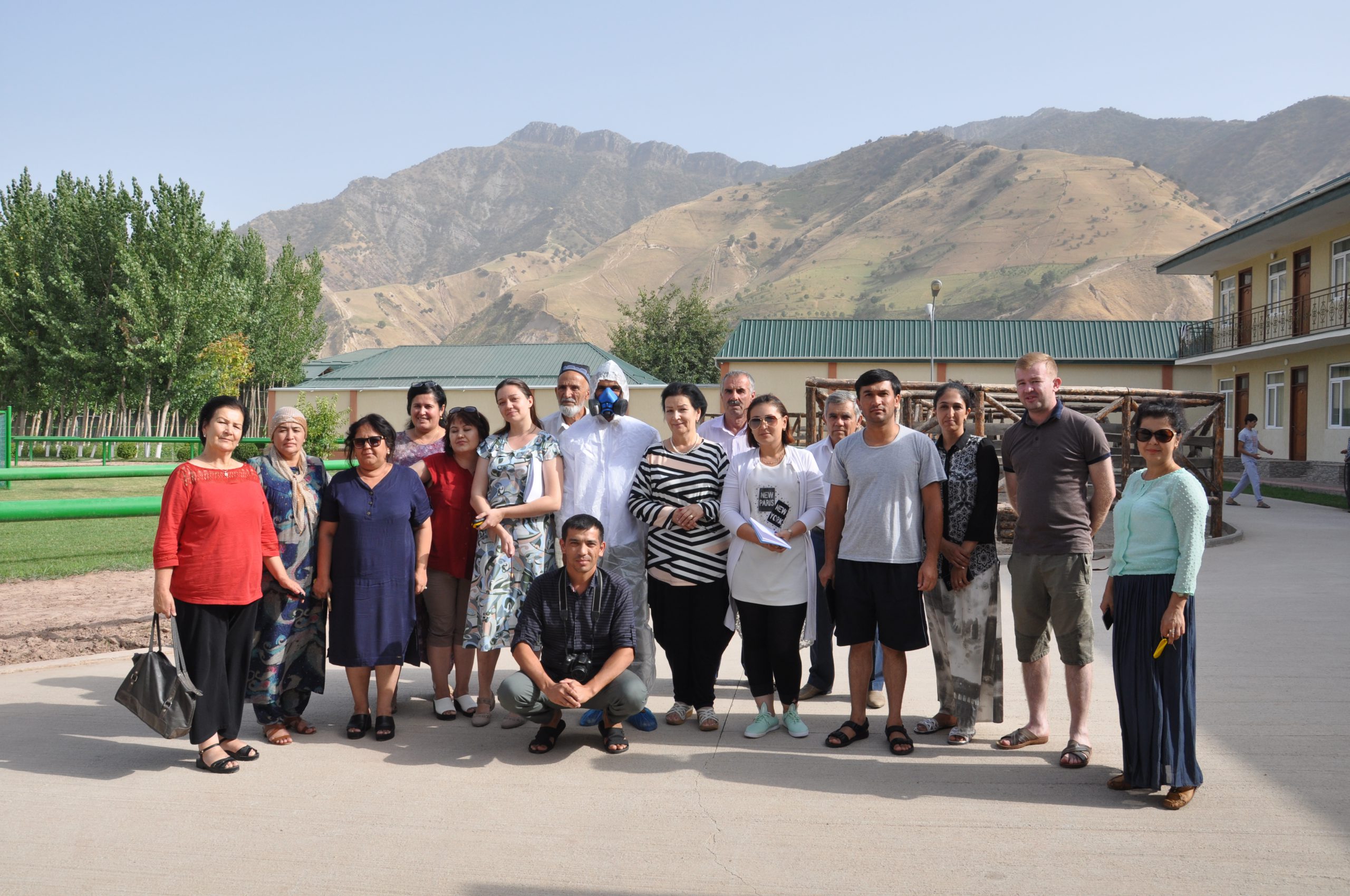
The breast milk of Tajik mothers contain a mean concentration of DDT that is 4 times higher than permissible levels, according to the World Health Organization in Tajikistan. This is not a surprise, with numerous open, crumbling stockpiles of obsolete pesticides abandoned across the country. Exposure to these chemicals is a priority health concern in Tajikistan, and is something that Umed Ulugov, Pure Earth’s country coordinator and project coordinator of the local environmental organization, Peshsaf, has been working on for several years.
This July, I joined Ulugov and other colleagues in Tajikistan for the first meeting of a unique coalition of civil society groups focusing on addressing environmental health threats. Convened with support from the European Union, this gathering brought together 22 organizations across Tajikistan to receive training in environmental and health assessment methods to address the problem in their communities.
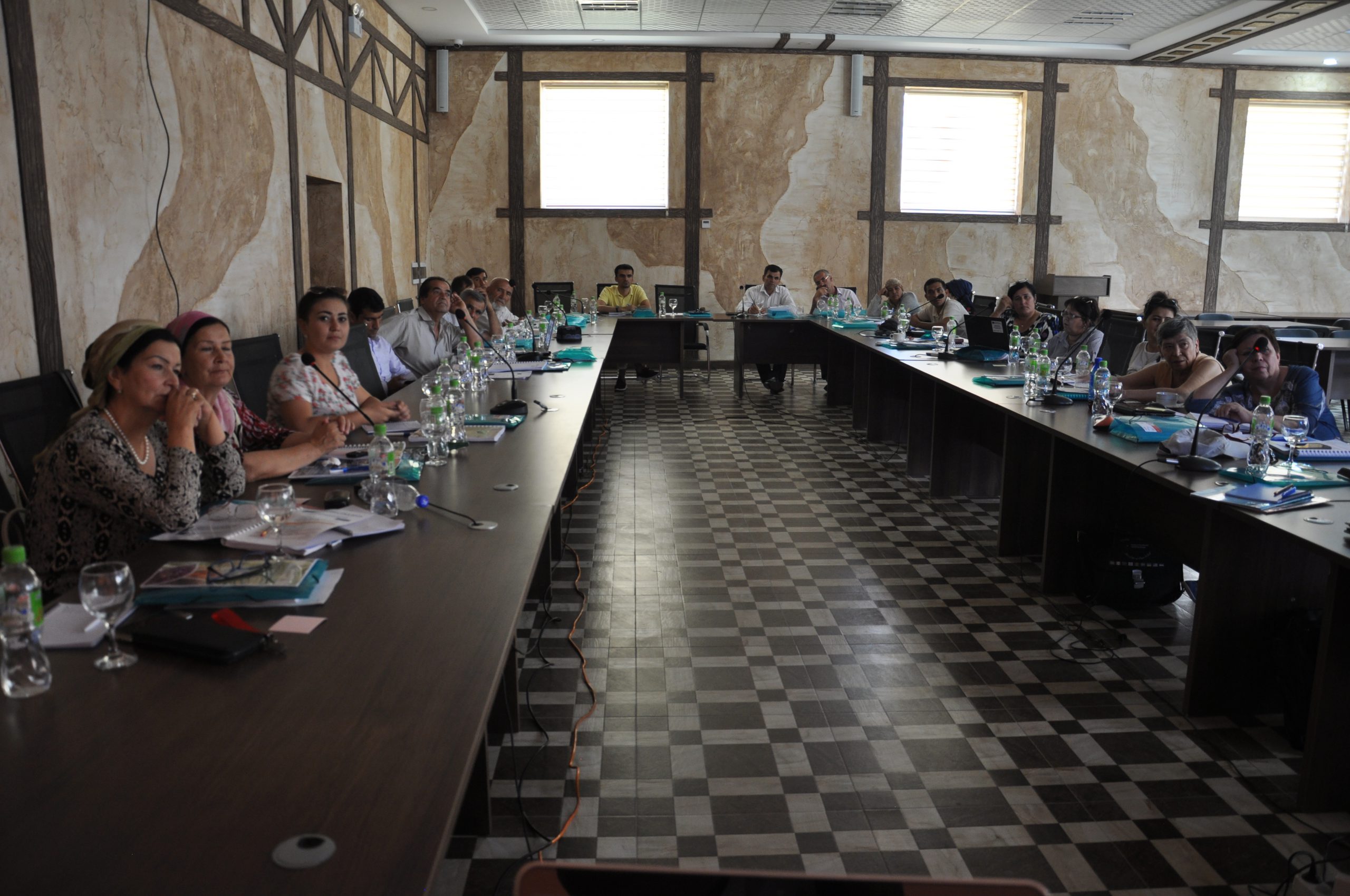
A Toxic Legacy
The Soviet Union directed the development of the cotton industry in Tajikistan and supplied the sector with tons of agrochemicals and pesticides. Once the Soviet Union collapsed, so did the complex infrastructure of pesticide monitoring and warehouse maintenance.
In 2012, Pure Earth, with the FAO and EU, conducted surveys of 372 pesticide warehouses located throughout Tajikistan. 26 of the pesticide warehouses were selected by Pure Earth from a subset of 145 warehouses in Tajikistan identified as posing the greatest risk to public health. These abandoned, decaying, pesticide storage warehouses, are in many cases, accessible to the public. In residential farming areas, curious children run around piles of dangerous chemicals.
Learning Together
Although we were meeting at a lovely resort along the Vakhsh River which tempted us with many diversions, the group worked long hours with brief meal breaks and sessions into the evening.
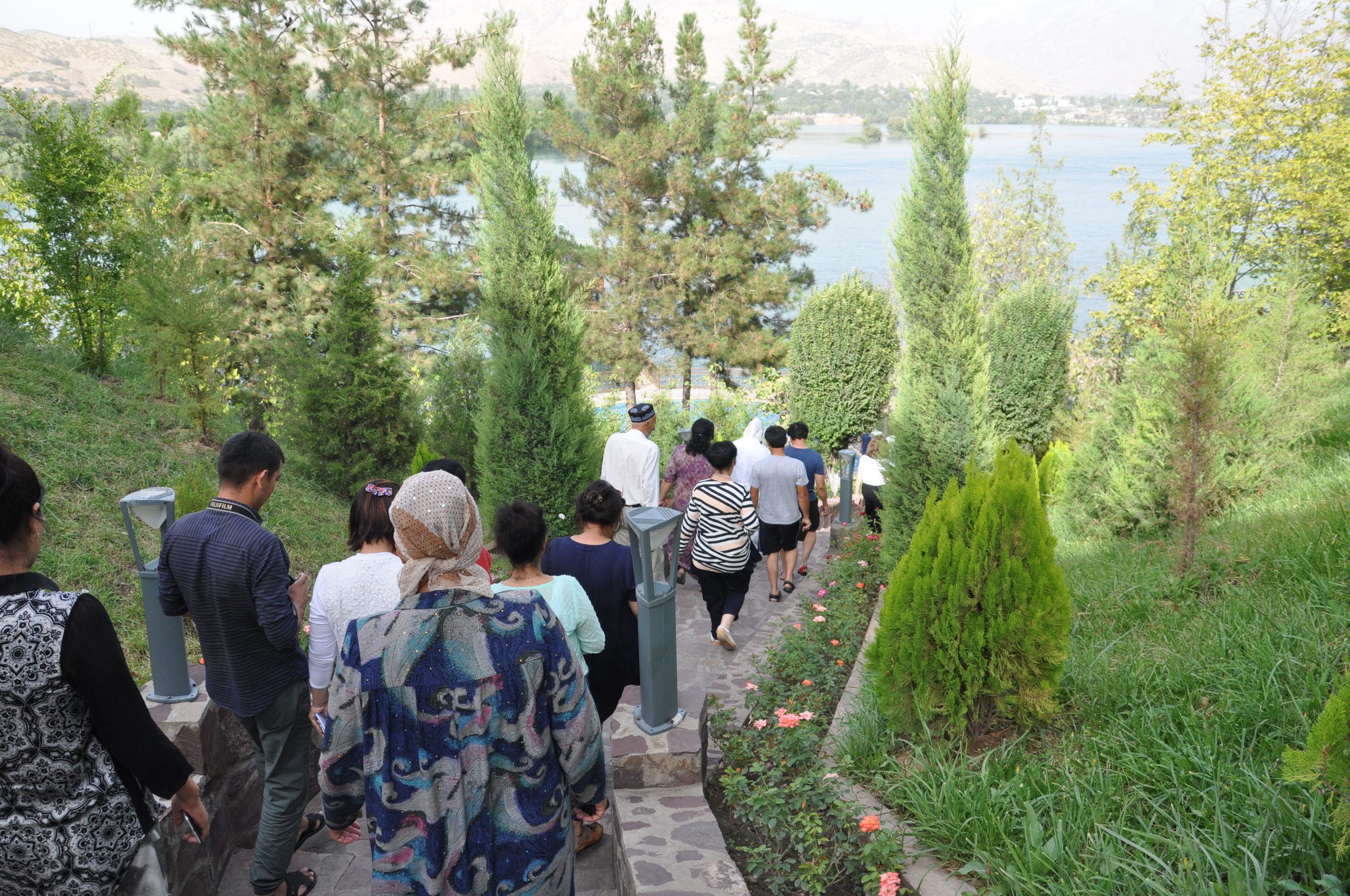
Over 5 days, we shared details and lessons learned from Pure Earth’s work across Eastern Europe and Central Asia, with presentations from Pure Earth Regional Director Petr Sharov, Azerbaijan country coordinator Rovshan Abbasov, Kyrgyzstan country coordinator Indira Zhakipova, and Mongolia country coordinator Erdene Naidansuren.
I led a workshop on communications focusing on the unique opportunity this group has to message as a coalition, and the potential impact and reach this has. We also explored the power of storytelling. Participants worked in groups to identify the powerful stories they knew of people suffering from pollution exposure and then shared the most impactful stories with the large group. We then discussed next steps in putting together stories to use throughout the project. Look out for some of these stories in our pollution blog.
Technical advisory Nick Albergo spoke about the evolving knowledge and methods of site characterization, and how to select an appropriate remediation solution. Another day was devoted to reviewing all the environmental laws and regulations in Tajikistan.
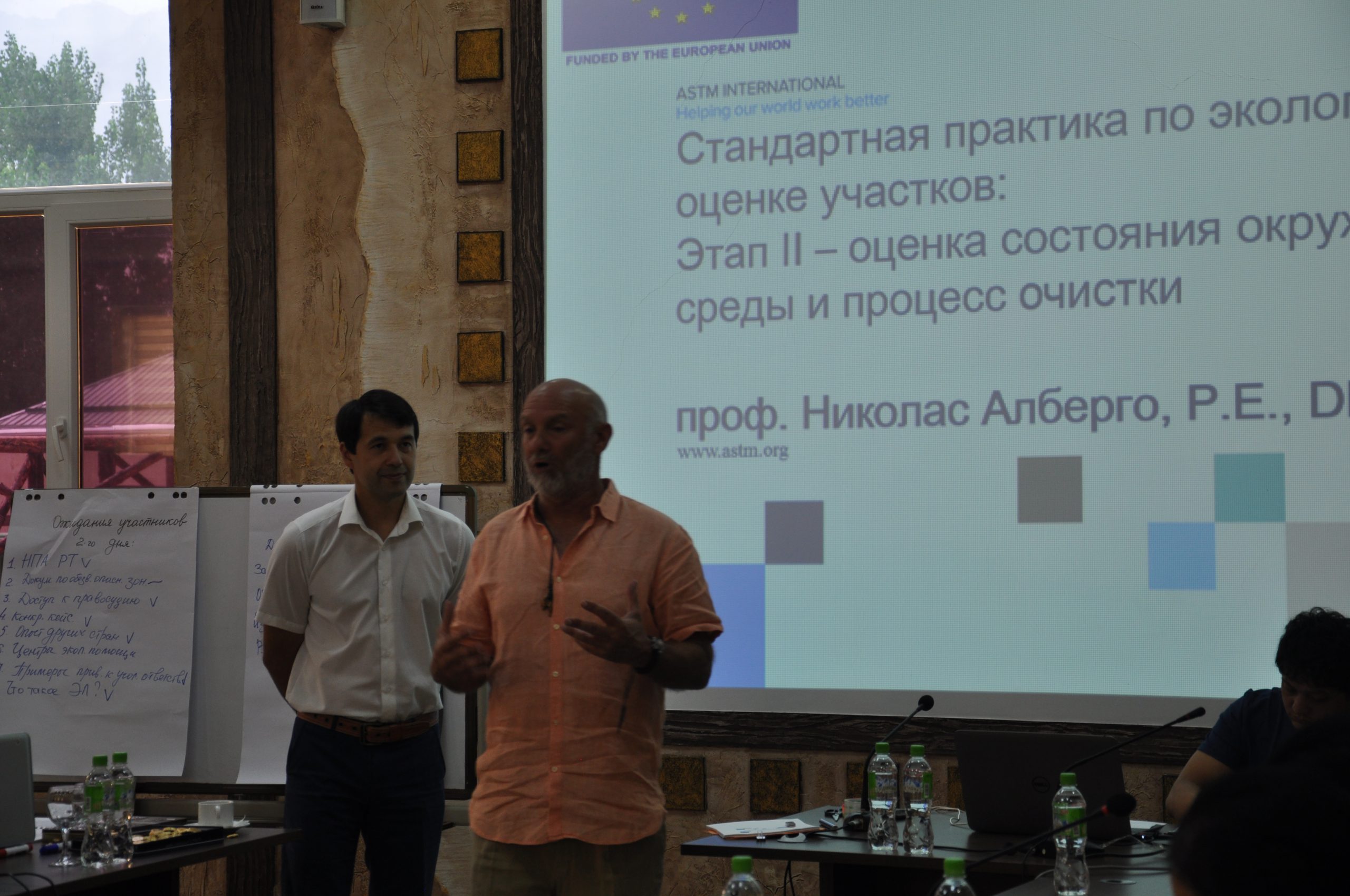 In between presentations, participants from the various organizations got into breakout groups to discuss and exchange ideas.
In between presentations, participants from the various organizations got into breakout groups to discuss and exchange ideas.
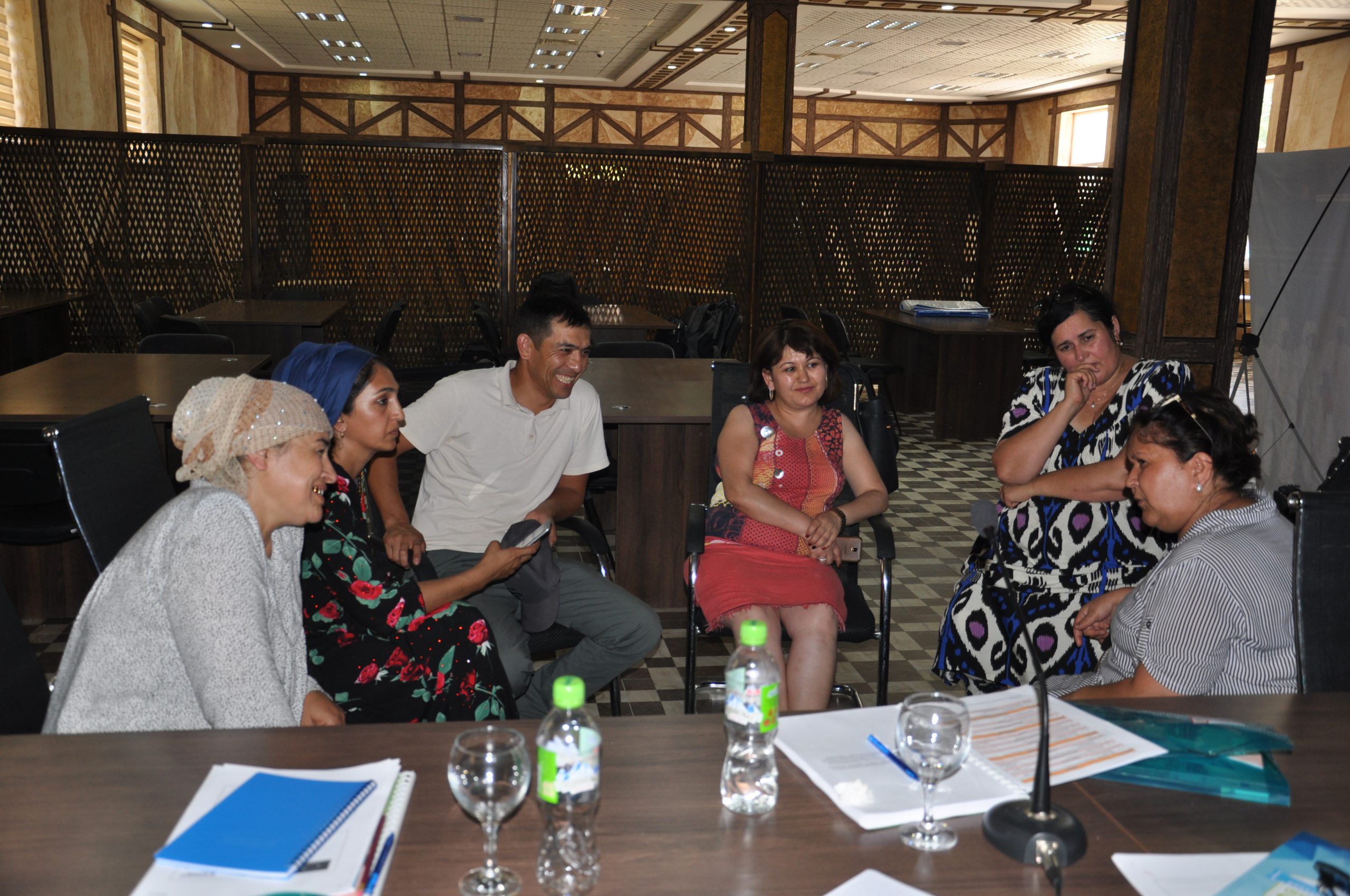
Out of the classroom, Umed demonstrated how to use the XRF (X-ray fluorescence spectrometer), a hand held analyzer that can detect and measure toxins in soil in under a minute.
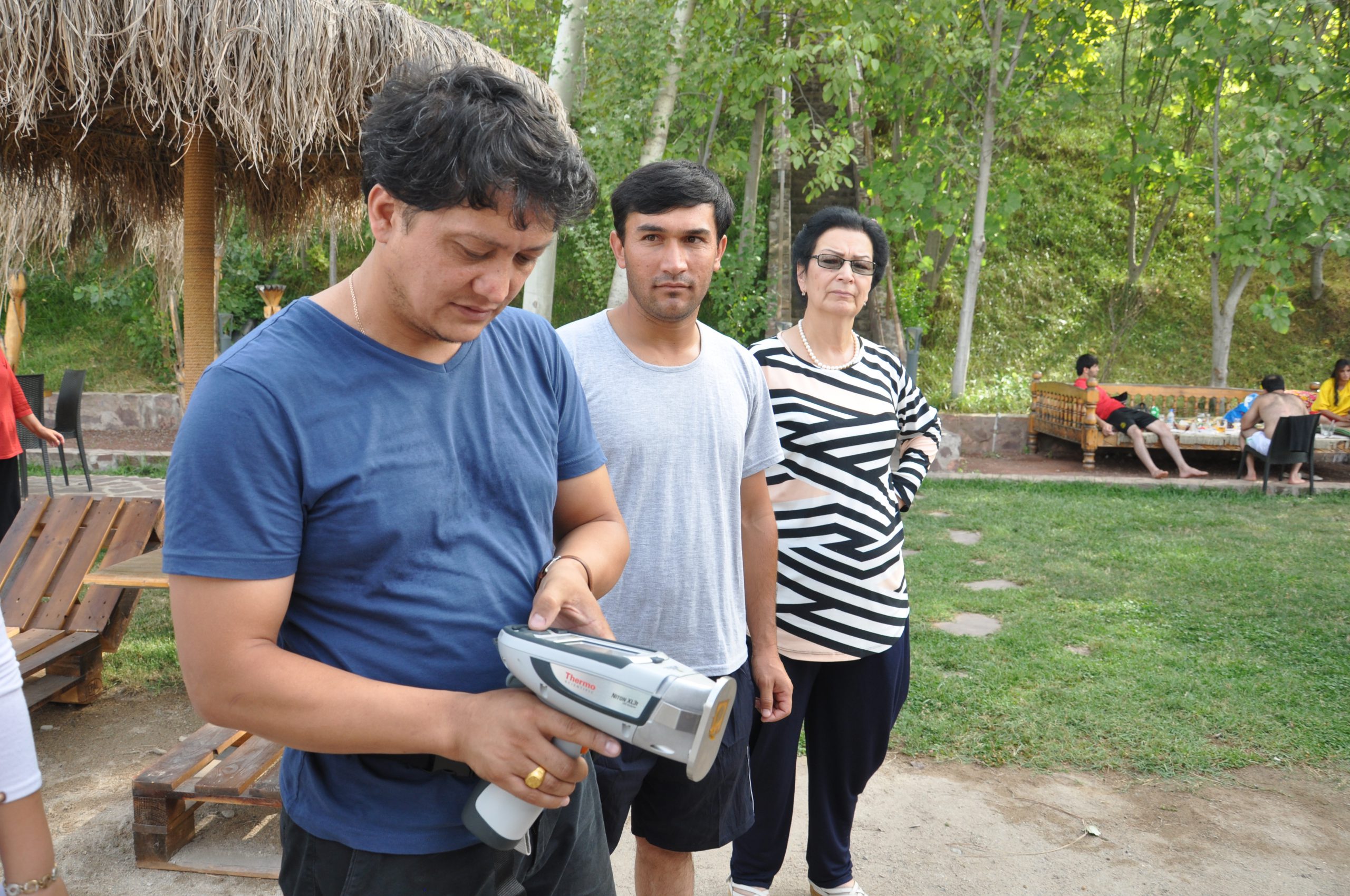 A brave student donned a full hazmat suit and a respirator in the 100 degree heat for a quick walk down to the river bank to test some soil. Vacationers looked on with great curiosity and we were able to inform the resort management that their soil was indeed clean, with no chemical contaminates.
A brave student donned a full hazmat suit and a respirator in the 100 degree heat for a quick walk down to the river bank to test some soil. Vacationers looked on with great curiosity and we were able to inform the resort management that their soil was indeed clean, with no chemical contaminates.
 Out In The Field
Out In The Field
On the 4th day, our group traveled by bus to farm with a contaminated site 3 hours from Nurek – very close to the Afghan border. Climbing higher up the mountains we strained to glimpse the bright blue ribbon of the Vakhsh River through the hazy, dusty air. 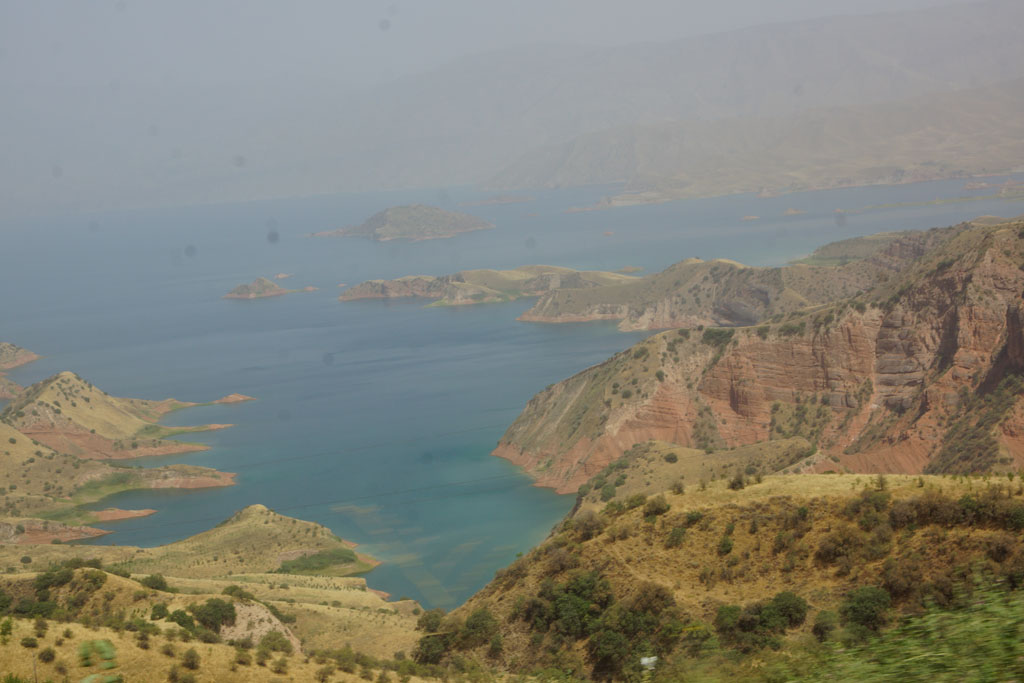
With the high heat of the summer (100+ degrees F), the hillsides were dry and mostly bare –tough going for animals grazing, tougher for the Tajik people working in the heat.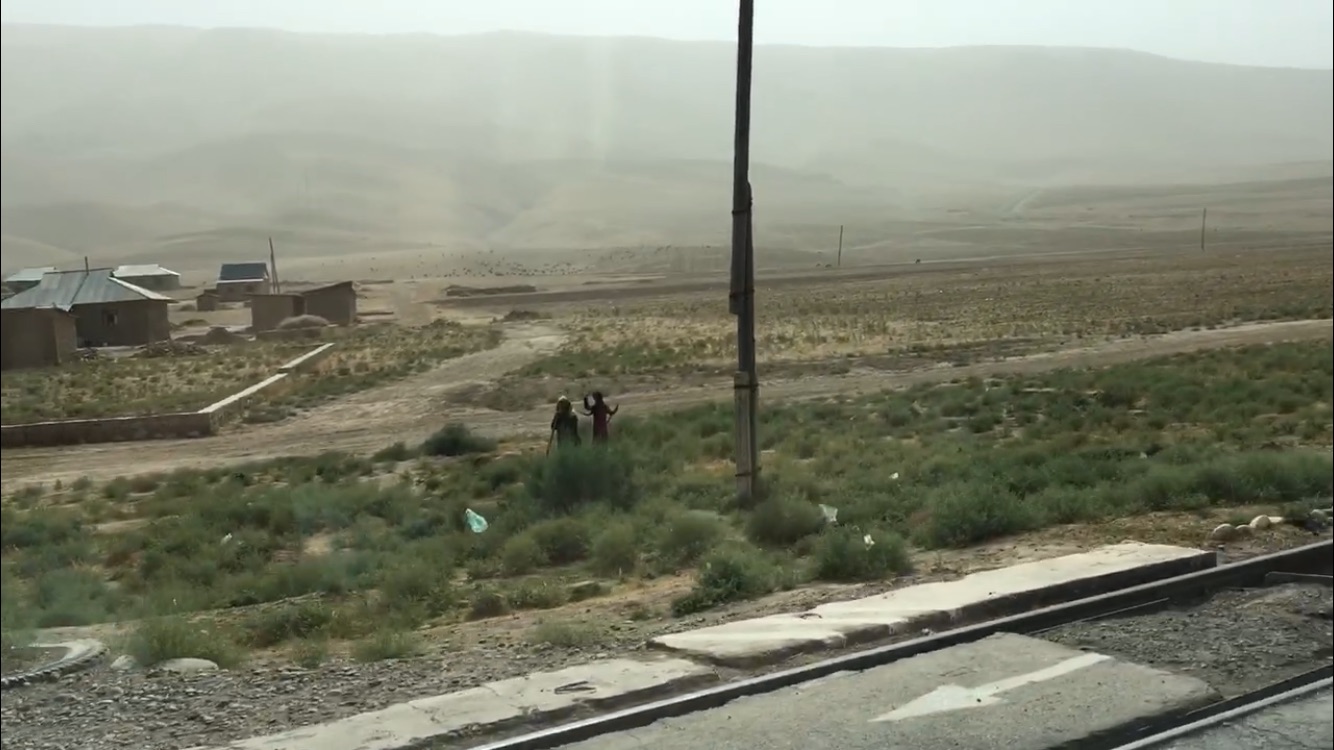
Melons were in season so roadside vendors were plentiful. When we passed the first cotton field, I was startled by the contrast – a vast green carpet stretching near to the horizon. Harvest was a few months away so the fields were empty. I was told during the Soviet era, when it was time to harvest cotton, the entire country stopped what they were doing and went out into the fields. Serious skin aliments were not uncommon from the large amount of pesticides used.
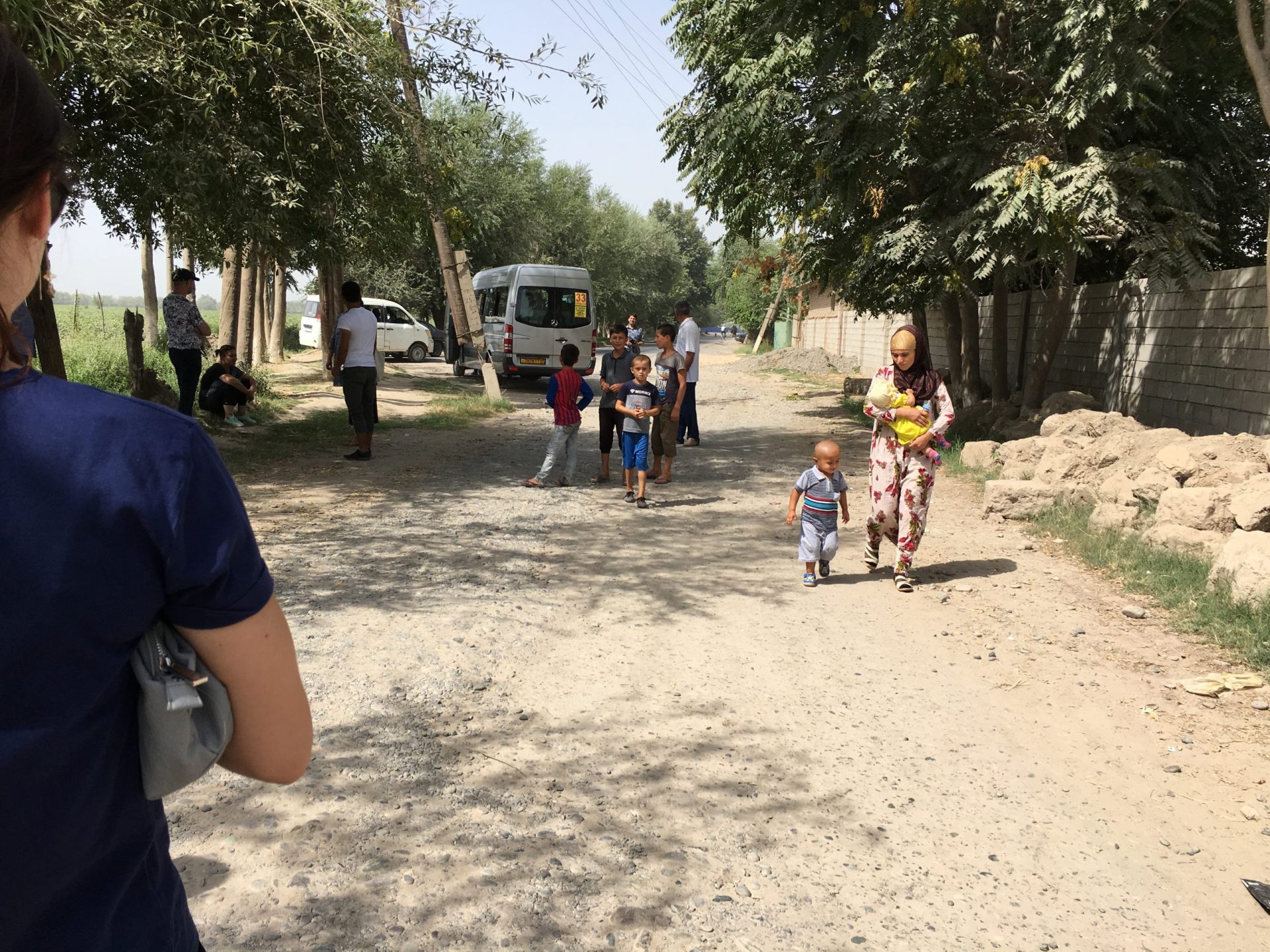
Each village we passed through had a simple but busy roadside market with a few cars, carts pulled by donkeys or people leading donkeys with loads of hay on their backs. Just outside the village center, there were small clusters of houses on barren hillsides, some very simple made from stones or clay, others more substantial with concrete walls and windows.
We stopped halfway through the journey to pick up some supplies at a market in a village with a hospital. We got out to stretch our legs and took a short walk to the hospital and asked to use the bathroom. There was only a pit toilet and no running water. Now I understood the standard of living outside the capital Dushanbe and away from the pleasant resorts in Nurek.
We finally arrived at our destination – a rather verdant farm – due to the ditch irrigation system. Our instructors led us to a small open barn used for hay storage.
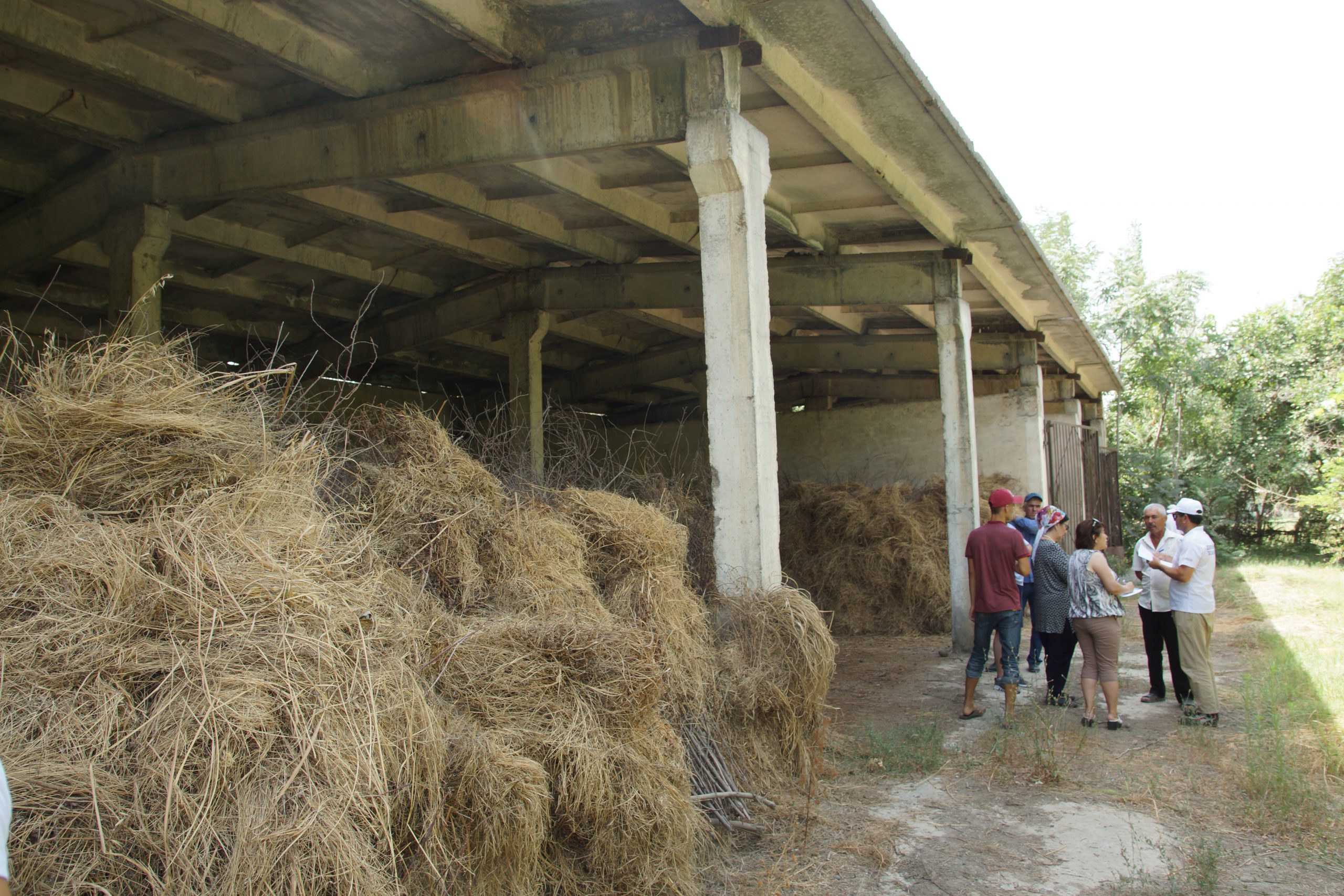
In the back corner were exposed piles of old chemicals and fertilizers with crumbling bags strewn about.
Earlier lab reports from sampling identifying the chemicals as DDT, lindane, and more. The hay was contaminated by the open chemical stores and is not safe for animal use.
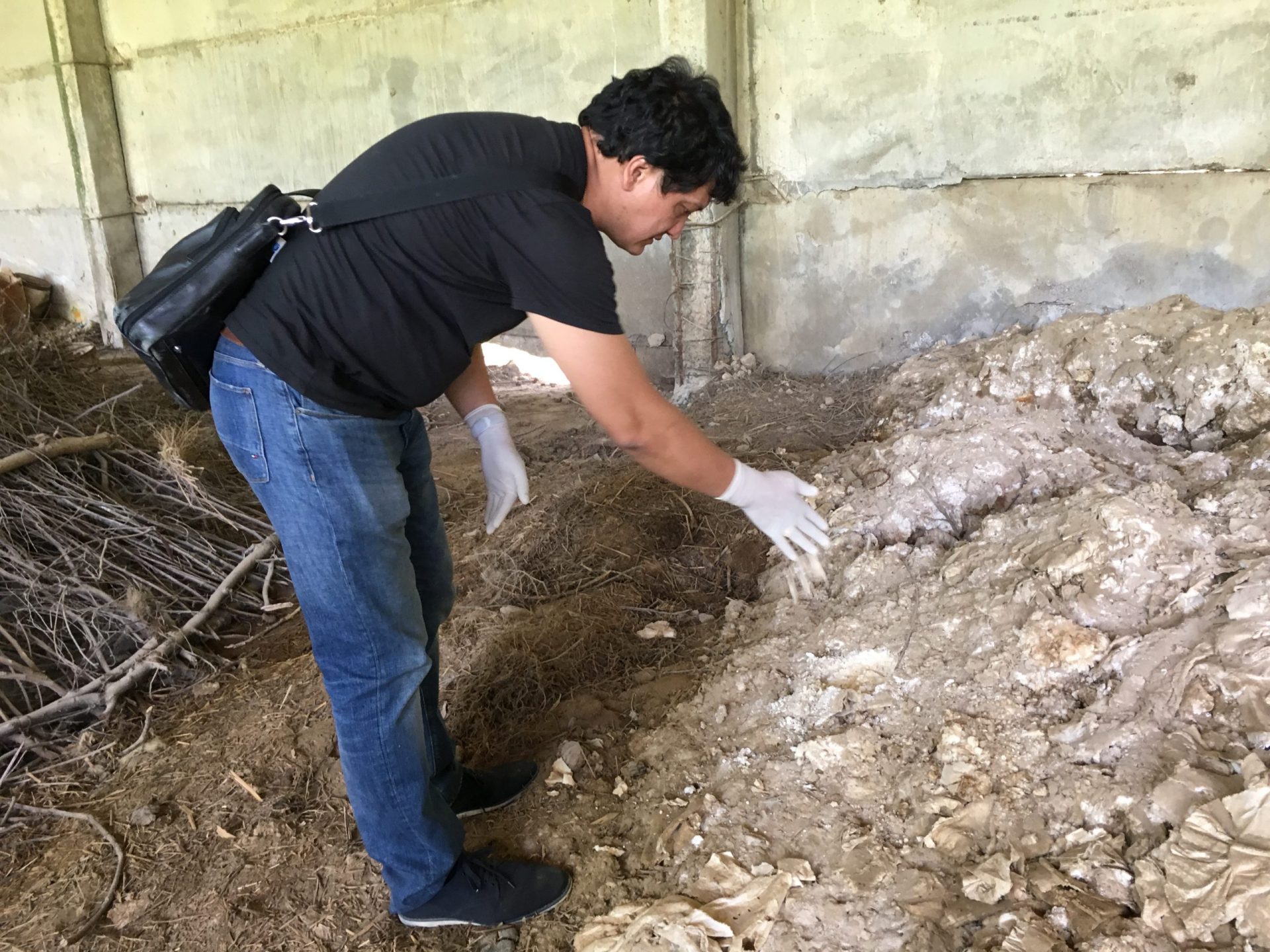
The group was instructed in how to analyze and characterize the risks at the site, pointing out that the hay being used to feed cattle was contaminated, and that the fruit growing on the trees 10 feet from the barn were a risk as well. The trainees collected soil samples, took measurements using the XRF, took pictures and wrote up notes. Umed referred to pictures he had taken in his last visit to the site 6 months before indicating that the chemical piles looked like they were being walked on.
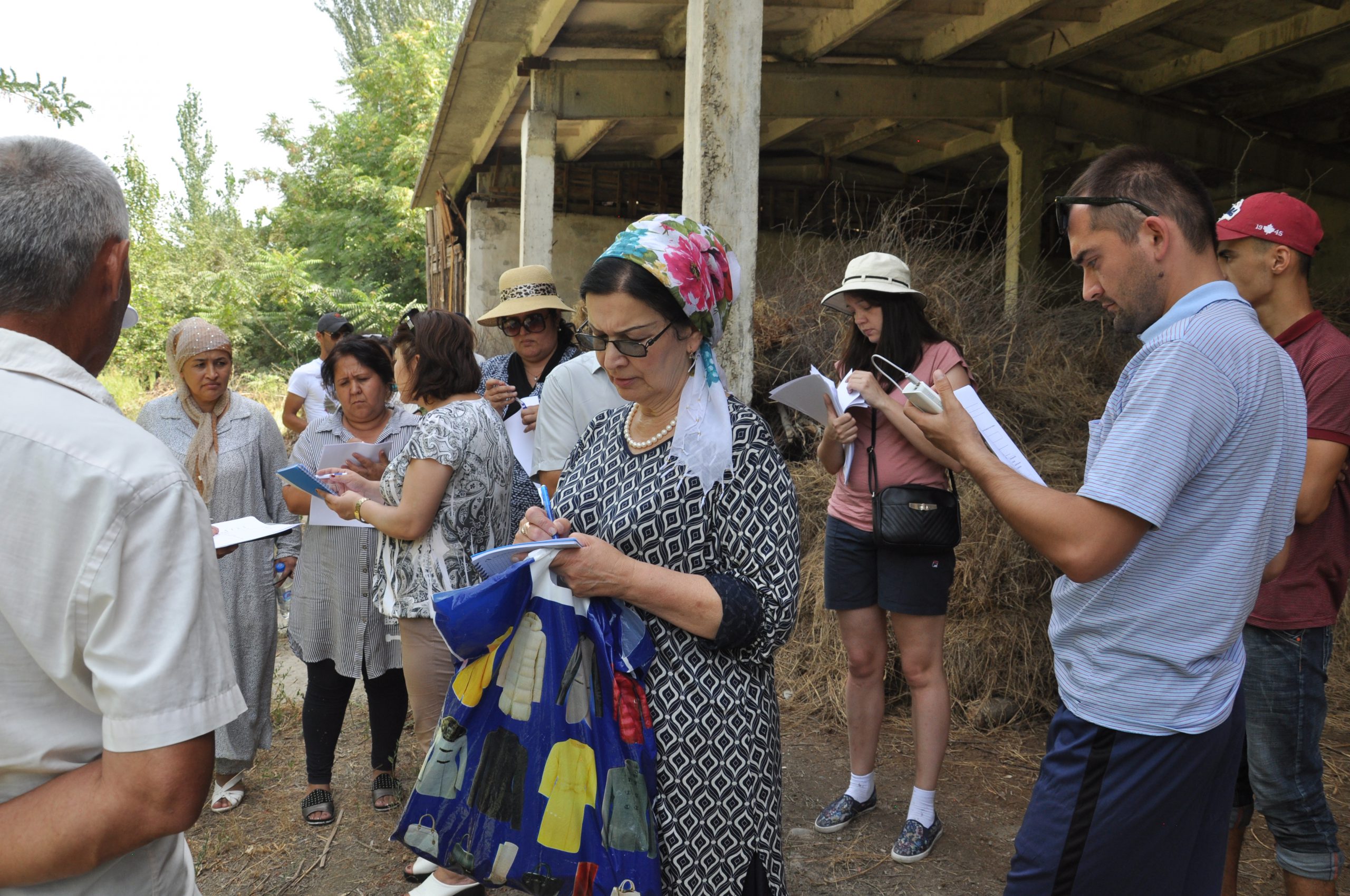
Another area of concern was a patch of ground behind the barn where no grass was growing. Umed has seen this before and it indicates that a large amount of obsolete pesticides may be buried there.
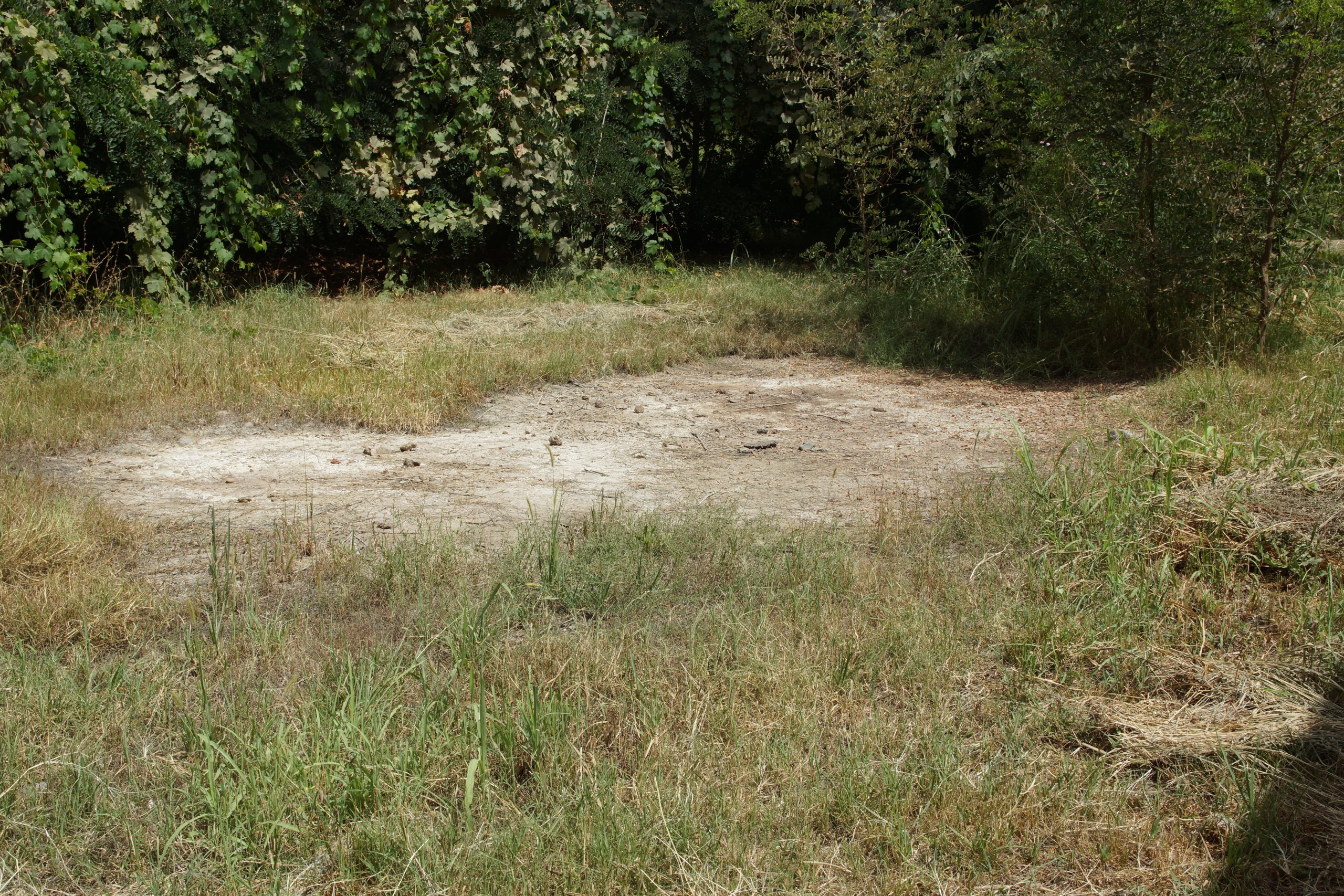
When the manager of the farm came to talk with the group, Umed explained the exposure risks of the pesticide. One of our trainees, who heads a women’s rights organization, spoke with the farmer about the moral responsibility to protect people, animals and crop from harm and evoked teachings in the Koran.
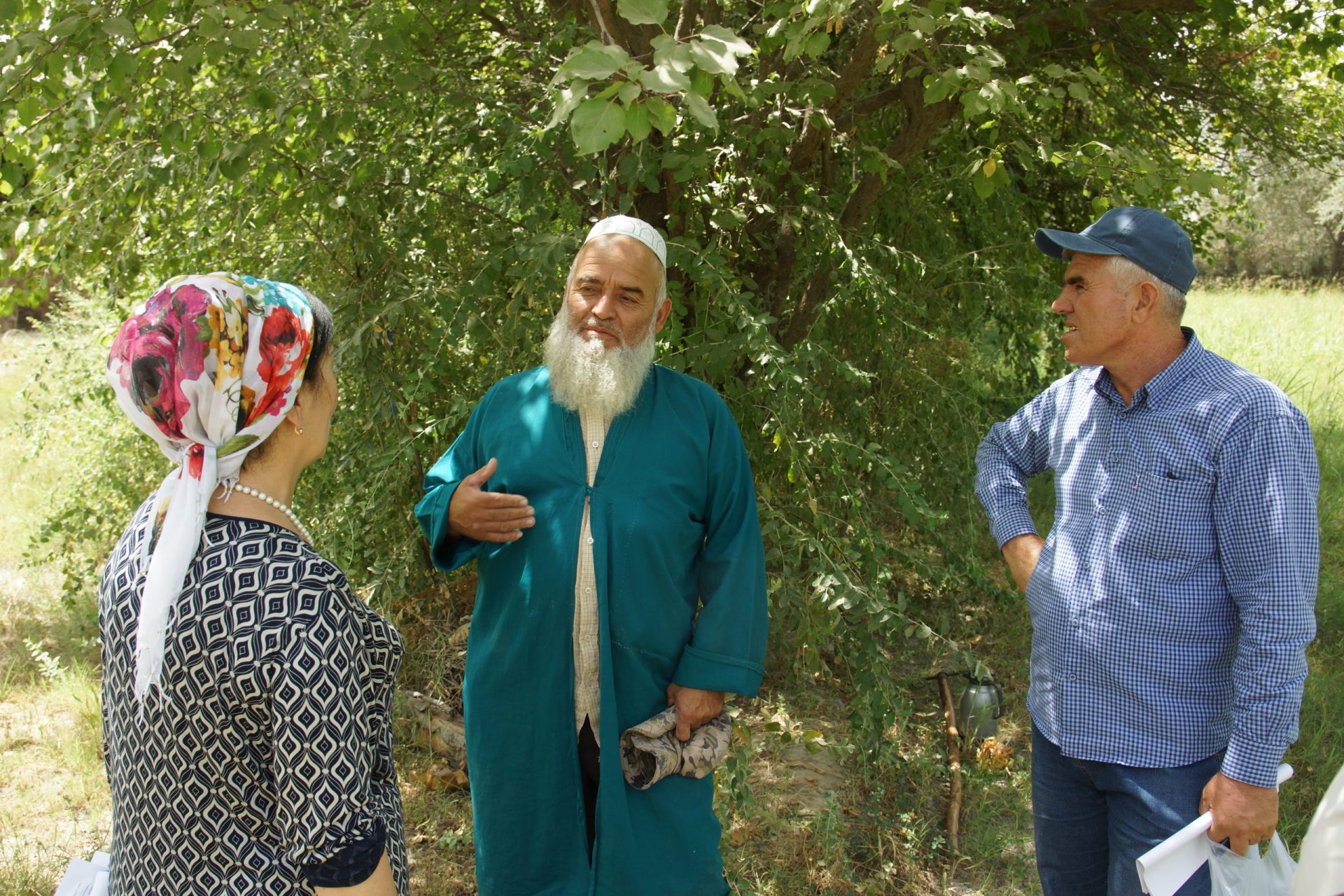
Back at the resort, the group had a chance to rest, eat dinner, then get back to work entering data into the toxic sites identification program database. They worked until 10pm that night. TAB member Albergo said the Tajik group was the most dedicated and hardest working group he had ever trained.
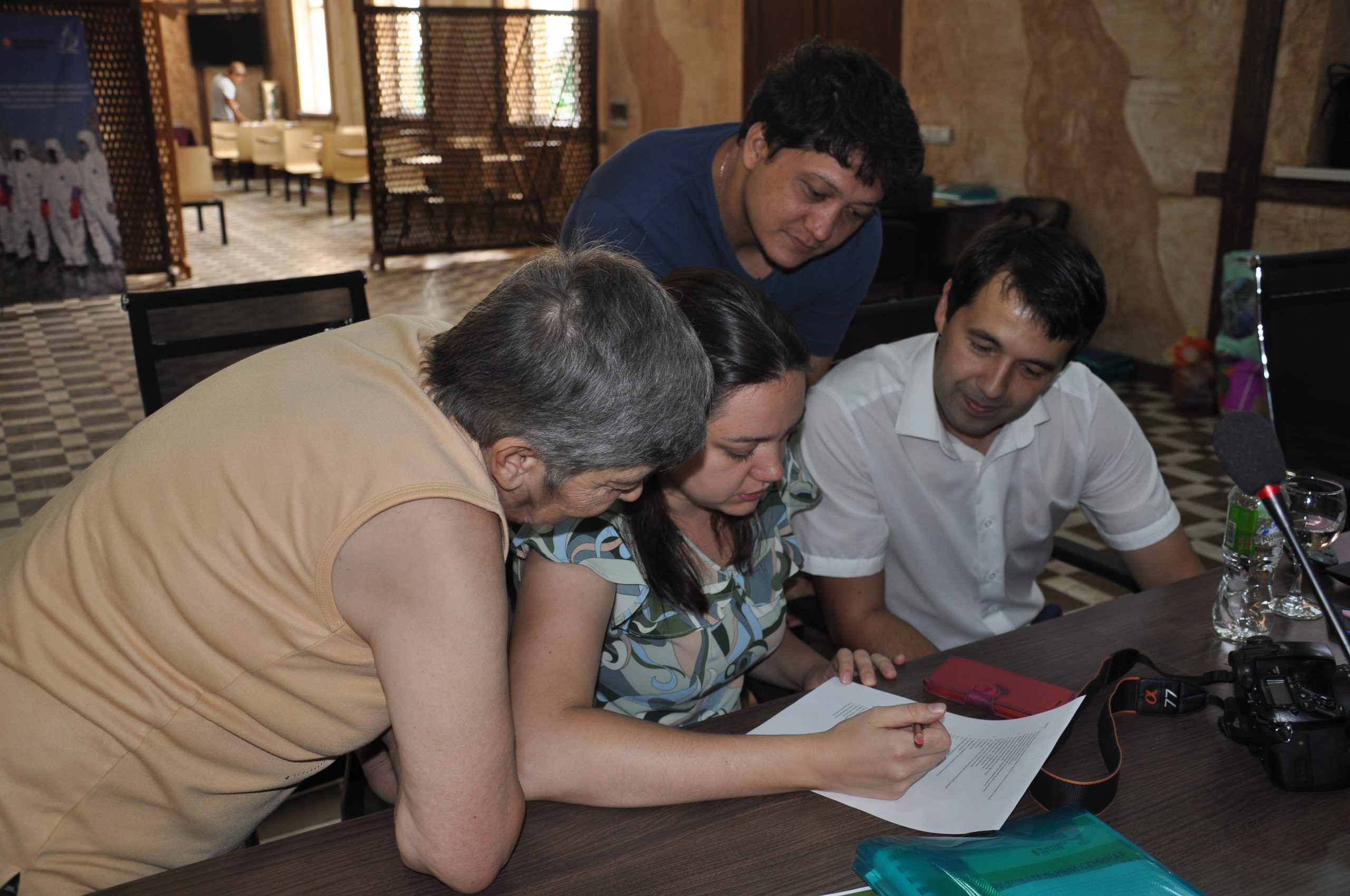
The final day, after certificates were awarded to all attendees, we loaded back into the minibuses, said goodbye or dosvidaniya, and started looking forward to the next phases of the project – assessing toxic sites in multiple regions and setting priorities for action. I look forward to returning and reconnecting with new friends and colleagues, but hopefully when the weather is a bit cooler.
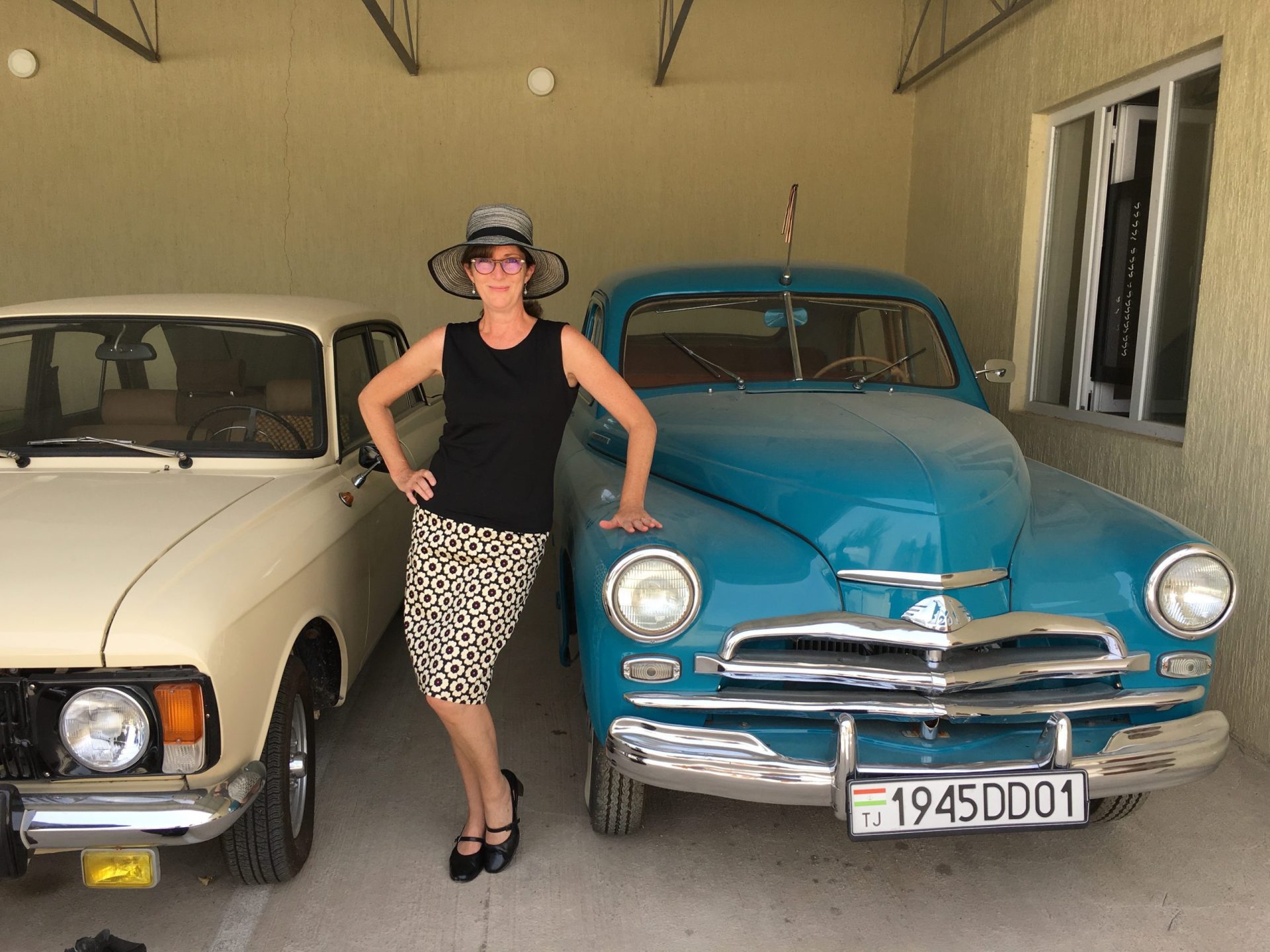




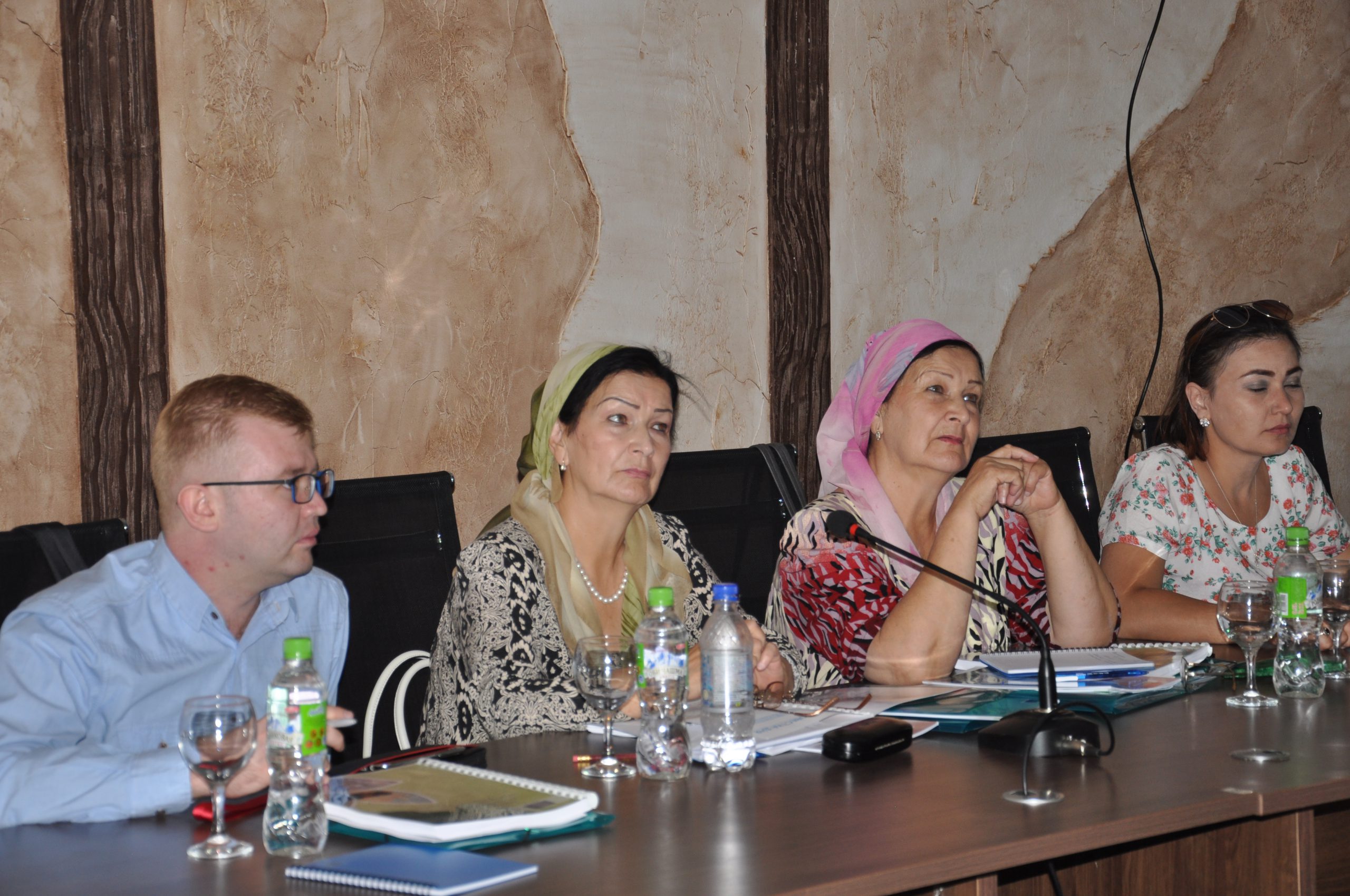
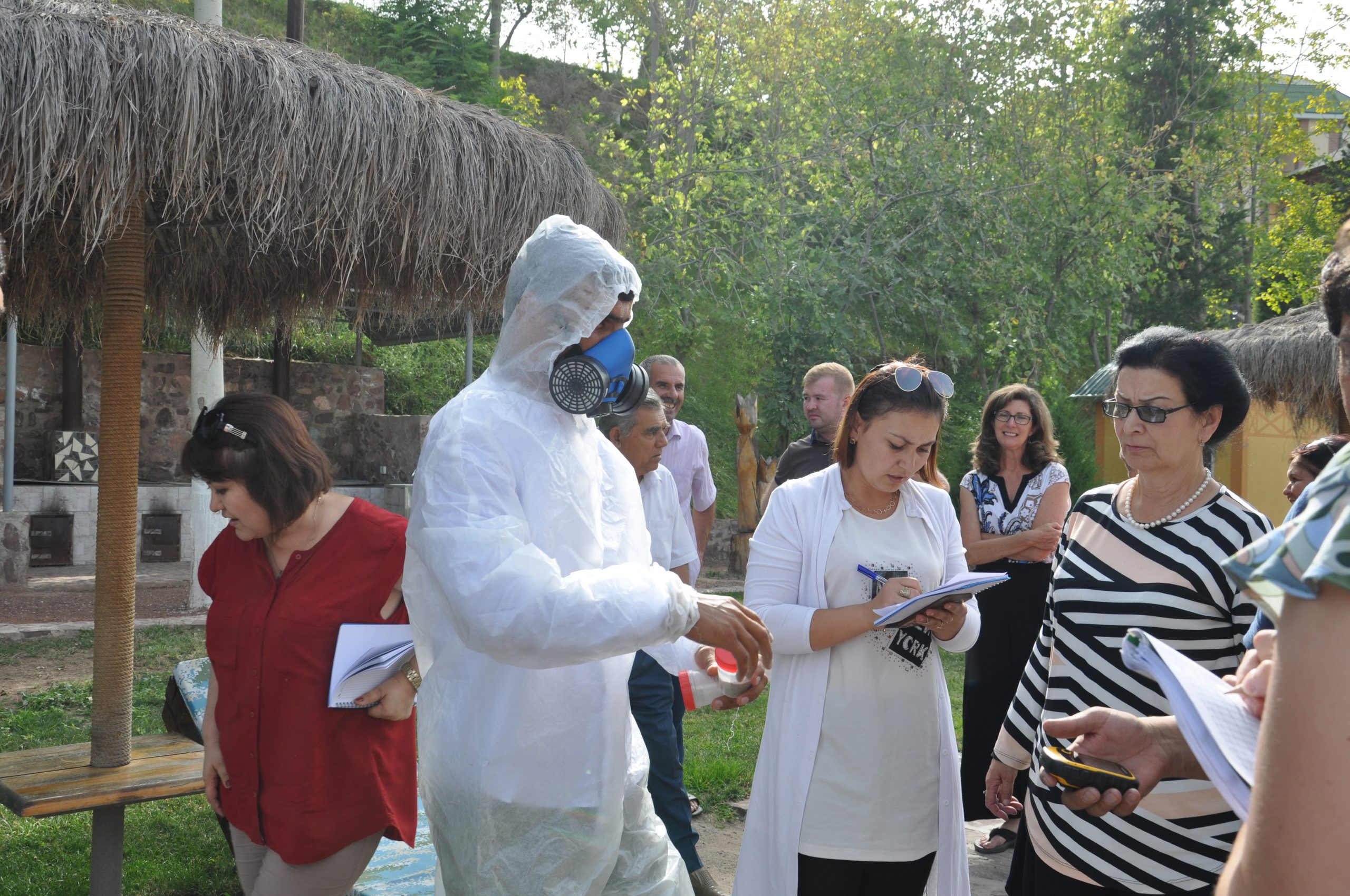 Out In The Field
Out In The Field